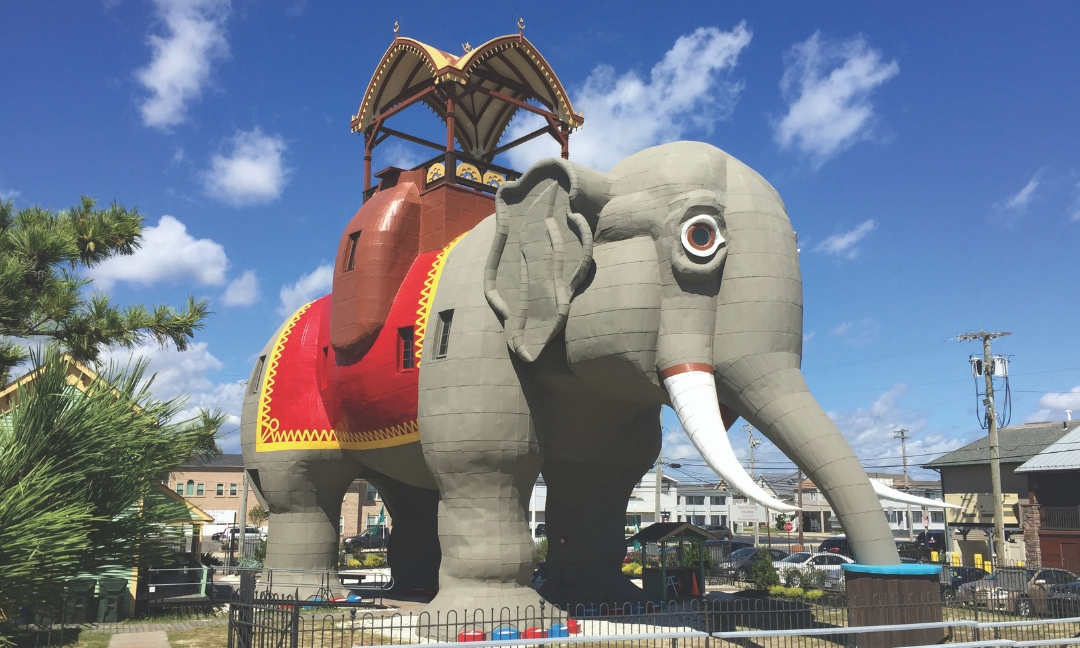GROUPON GUIDE TO COLUMBUS
How Lucy the Elephant Became a Jersey Shore Icon
BY: Andy Seifert |Aug 29, 2019
Shop Tours

Explore Distillery Tours with Tasting and More Surprises
750 Cross Pointe Road, Columbus • 9.5 mi
55% discount_off
$3.60 with_code GROUPON
Noble Cut Distillery

Join a Mead-Tour Experience with Tasting in Columbus
1025 West 3rd Avenue, Columbus • 2.1 mi
36% discount_off
$12.80 with_code GROUPON
Brothers Drake Meadery

Trending
Up to 43% Off Admission at African Safari Wildlife Park - Ohio
267 South Lightner Road, Port Clinton
43% discount_off
$15.96 with_code GROUPON
African Safari Wildlife Park in Ohio

Trending
SAVE NOW! 50% Off - Cinncinnati Zoo, museums, etc
50% discount_off
Pogo Pass - Cincinnati

Trending
Admissions to One World Observatory's Spectacular NY Skyline Views
117 West Street, New York
10% discount_off
One World Observatory

Unforgettable Capybara Encounter at African Safari Wildlife Park
267 South Lightner Road, Port Clinton
43% discount_off
$29.60 with_code GROUPON
African Safari Wildlife Park

Discover Motorcycle Legends with Museum Admission for Two or Four
13515 Yarmouth Dr, Pickerington • 12.1 mi
60% discount_off
Motorcycle Hall of Fame Museum

Explore American Military History with Museum Admission for Two or Four
5075 S Hamilton Rd, Groveport • 9.5 mi
50% discount_off
$9.60 with_code GROUPON
Motts Military Museum

Explore Motorcycling History at Motorcycle Hall of Fame Museum
13515 Yarmouth Dr, Pickerington • 12.1 mi
50% discount_off
$8 with_code GROUPON
Motorcycle Hall of Fame Museum

Distillery Tour & Tasting for 2, 4, or 8 with Souvenirs Included
134 Harding Way West, Galion
33% discount_off
$28 with_code GROUPON
Iron Vault Distillery

Explore Victorian Life with Museum Admission for One to Six
586 East Town Street, Columbus • 1.1 mi
20% discount_off
$6.40 with_code GROUPON
The Kelton House Museum & Garden

Columbus Crusade Scavenger Hunt
$27
Alley Kat Adventures

Up to 50% Off on Haunted House
50% discount_off
$17.99 with_code SAVE
4 bought
A Murder Among Us MURDER MYSTERIES

Columbus Scavenger Hunt Adventure
$20.52
Urban Adventure Quest

General Admission-Columbus Attractions Pass
300 West Broad Street, Columbus • 0.1 mi
$55
$44 with_code GROUPON
Columbus Attractions Pass
Shop Events

Trending
SAVE NOW! 50% Off - Cinncinnati Zoo, museums, etc
50% discount_off
Pogo Pass - Cincinnati

Trending
Up to 43% Off Admission at African Safari Wildlife Park - Ohio
267 South Lightner Road, Port Clinton
43% discount_off
$15.96 with_code GROUPON
African Safari Wildlife Park in Ohio

Trending
Admissions to One World Observatory's Spectacular NY Skyline Views
117 West Street, New York
10% discount_off
One World Observatory

Unforgettable Capybara Encounter at African Safari Wildlife Park
267 South Lightner Road, Port Clinton
43% discount_off
$29.60 with_code GROUPON
African Safari Wildlife Park

Explore American Military History with Museum Admission for Two or Four
5075 S Hamilton Rd, Groveport • 9.5 mi
50% discount_off
$9.60 with_code GROUPON
Motts Military Museum

Explore Motorcycling History at Motorcycle Hall of Fame Museum
13515 Yarmouth Dr, Pickerington • 12.1 mi
50% discount_off
$8 with_code GROUPON
Motorcycle Hall of Fame Museum

Explore Victorian Life with Museum Admission for One to Six
586 East Town Street, Columbus • 1.1 mi
20% discount_off
$6.40 with_code GROUPON
The Kelton House Museum & Garden

Private Downtown Columbus Tour Up to 3 Passengers
$399
Columbus Helicopter Tours

Solve Thrilling Murder Mysteries At Home With QR Clues
50% discount_off
$17.50 with_code GROUPON
4 bought
A Murder Among Us MURDER MYSTERIES

Self-guided scavenger hunt adventures for groups of 2, 4, or 6
90 W Broad St, Columbus • 0.2 mi
55% discount_off
$20.78 with_code GROUPON
ScavengerHunt.com

Cuyahoga Valley National Park Self-Guided Driving Audio Tour
$16.99
Guide With Action

Self-Guided Scavenger Hunt: Youngstown Roaming The Rust Belt
$12.31
Let's Roam

Wabash Cannonball Ebike Tour
$64.11
Jeff Neibler

Self-Guided Tour of The Fallen Timbers Battlefield
$5.99
VoiceMap Audio Tours

Adventure Walk for One or Group Scavenger Hunts Available
50% discount_off
$8 with_code GROUPON
Wacky Walks




